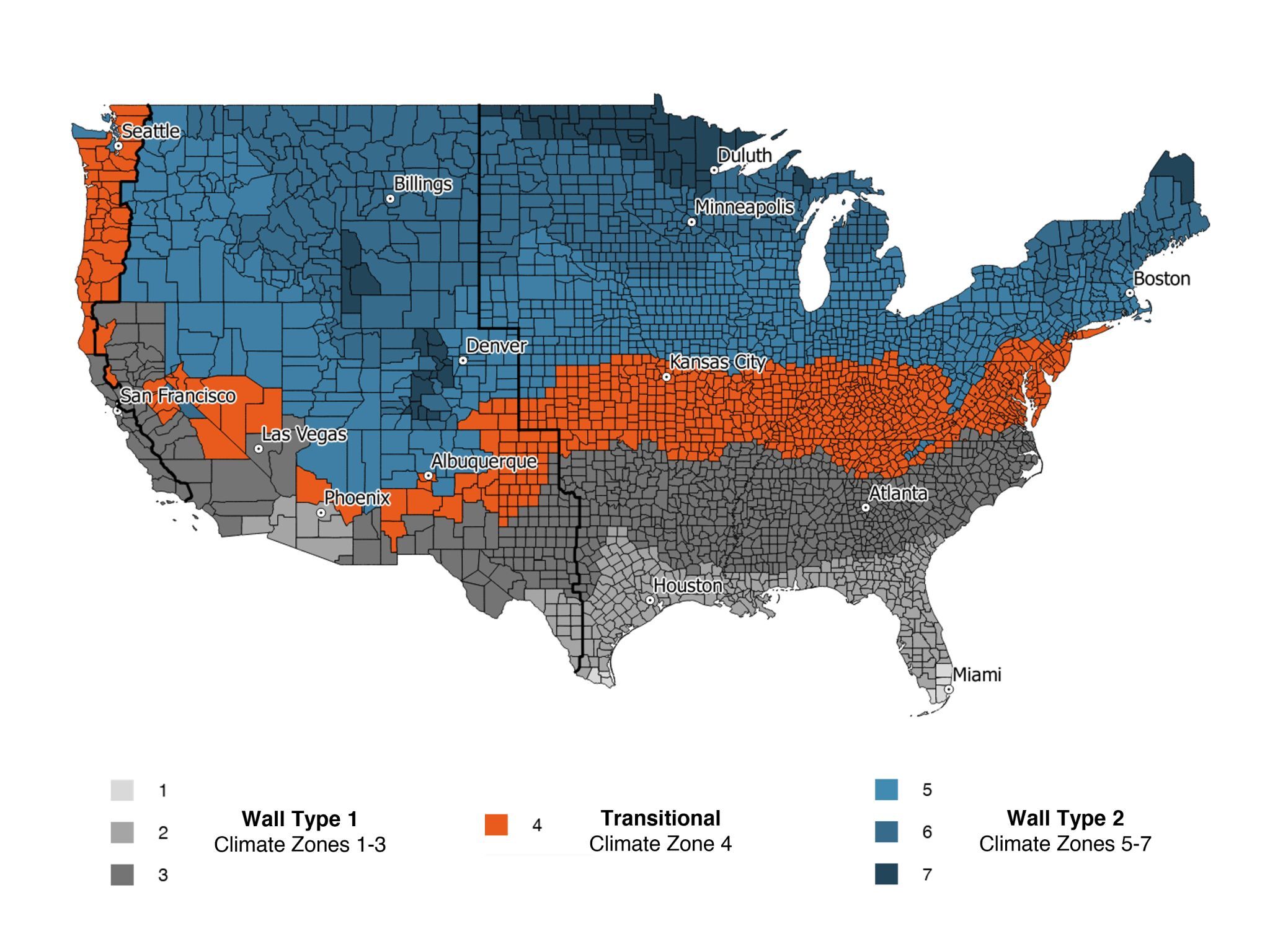Tags: #architecture #ashrae #buildingdesign #buildingscience #climate #materialsscience #resilience

The use of climate normals in climate-based design: An alternative approach for assessing hygrothermal performance of complex 2-D and 3-D assemblies.
Assemblies often pose complex geometries that conventional hygrothermal tools simply cannot handle (e.g. WUFI 1D and 2D). In these situations, I’ve found it beneficial to use time-dependent FEA with steady-state boundary conditions.
For example, here I show climate-based recommendations for two variants of a novel wall system. I used 30-day analyses employing extremes in monthly climate normals (temperature and RH). These data are readily available as NOAA’s 15-year and 30-year datasets. I used the legacy 1981-2010 dataset in selecting monthly normal lows and highs for design conditions corresponding to winter (January) and summer (August). I did this for each of the indicated cities. My emphasis was on condensation potential as the wall materials have low water absorption and low liquid transport. If desired, and with a little extra work, we can also accommodate liquid water transport.
This approach can examine any climate condition, any complex geometry, and any desired duration. And it offers reality checks to conventional stationary techniques which are good at showing general tendency but poor at telling us how long it takes to get there.